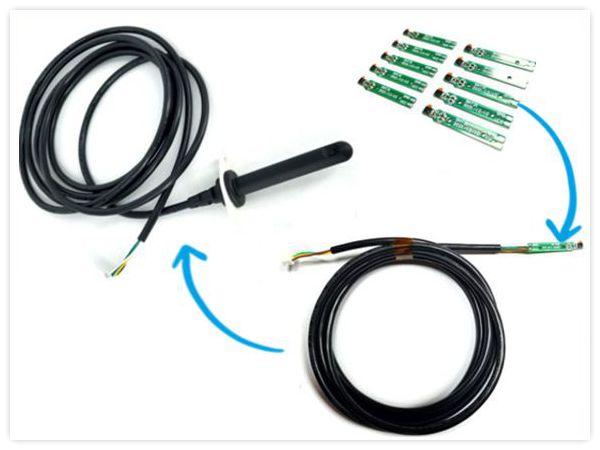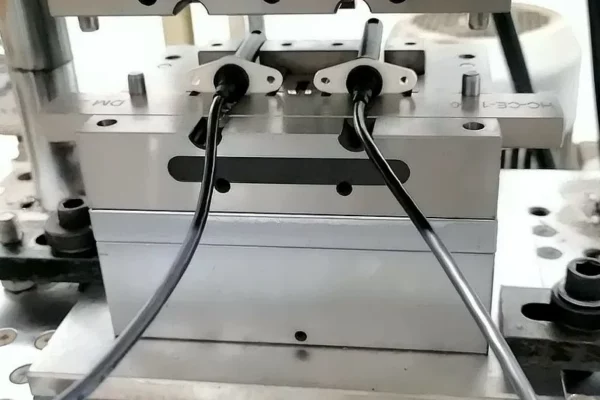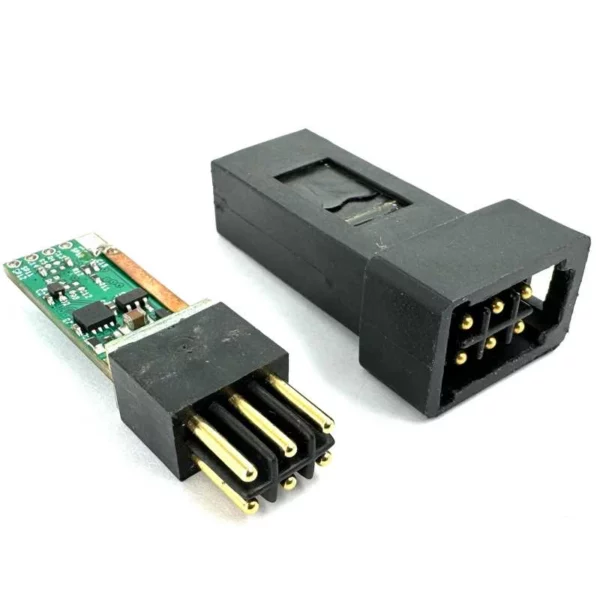PCB Overmolding: A Comprehensive Guide for Your Electronic Devices
The printed circuit board overmolding is a delicate injection molding process but it has several advantages. Let a professional factory like Davantech do the job for you.
- Watertight electronic assembly
- Overmolded sensors: temperature, humidity, capacitive
- Mold manufacturing and overmolding services
- Engineering support

Printed Circuit Board (PCB) overmolding is a crucial process in the electronic manufacturing industry. It refers to the injection molding of a plastic material over a PCB to create an enclosed, protected and functional assembly. This process results in a robust and reliable end-product that is suitable for various applications. Here we take a closer look at printed circuit overmolding, its benefits and its applications.
Benefits of PCB Overmolding
- Protection: The most significant advantage of PCB overmolding is protection. The plastic material used in overmolding provides a barrier against moisture, dust, and other environmental factors that can damage the PCB and its components.
- Durability: Overmolded Printed circuits also have increased durability of the assembly. The plastic material used in the process is strong and can withstand the wear and tear of daily use.
- Improved Functionality: Overmolding can also improve the functionality of the assembly. By encapsulating the components, overmolding can provide better grip and handling for the device.
- Cost-Effective: PCB overmolding is a cost-effective solution for manufacturers. It eliminates the need for additional enclosures, reducing both cost and assembly time.

Applications of PCB Overmolding
- Consumer Electronics: PCB overmolding is widely used in the consumer electronics industry. It is commonly found in smartphones, laptops, and other handheld devices.
- Medical Devices: PCB overmolding is also commonly used in the medical device industry. The process helps to protect delicate electronic components, ensuring that medical devices are durable and reliable.
- Automotive: The automotive industry also relies on overmolding. The process is used in the manufacture of car audio systems, GPS systems, and other in-car electronics.
- Industrial: The industrial sector also uses PCB overmolding. The process helps to protect electronic components in harsh industrial environments, ensuring reliable and safe operation.
Overmolded printed circuit boards.
The simplest way is to overmold a printed circuit board with a layer of soft TPE or TPU. In this case, the product is ready in one molding cycle. Typical products are humidity and temperature sensors soldered onto a circuit board with attached cable. We also encapsulate capacitive sensors with a layer of plastic. For other products we injection overmold the PCB, or a part of it in a shell of hard plastic and then do a partial or full overmolding. For example, when overmolding printed circuit boards with moving components such as a vibrator, we need to leave space around the component in order to let it move. Another example are batteries. It is important not to bring the molten plastic in direct contact with a battery to avoid damage due to the high temperature. Also, LED strings require a transparent shell made of polycarbonate which is overmolded partially to obtain a sealed assembly.

In conclusion, PCB overmolding is a crucial process in the electronic manufacturing industry. It provides protection, durability, improved functionality and cost-effectiveness for a wide range of applications. If you are looking for a reliable and cost-effective solution for your electronic devices, consider PCB overmolding.